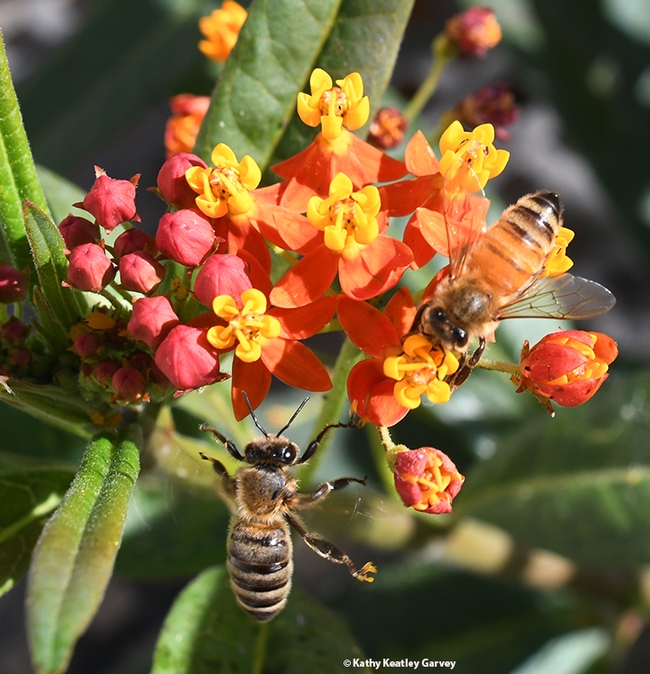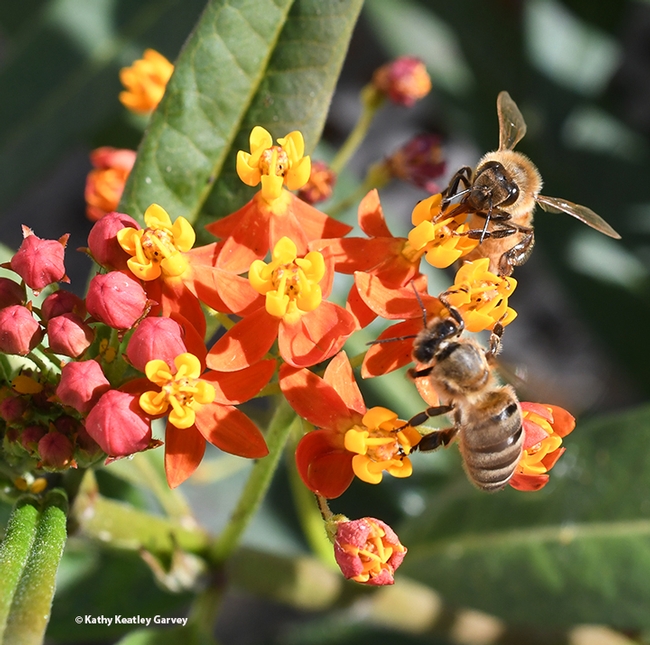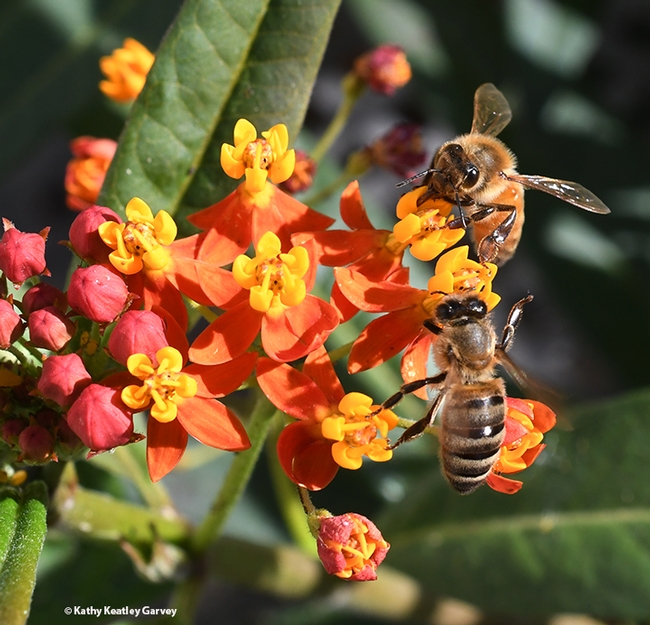Don't tell the honey bees.
They will forage where they want to--whether it's on bee balm, a dandelion or that controversial tropical milkweed, Asclepias curassavica.
Just before we cut back the tropical milkweed for the season, the honey bees got their last hurrah--the last bit of nectar for the year.
Why cut back tropical milkweed? Scientific research shows that this plant disrupts the monarch migration patterns when it's planted outside its tropical range, and can lead to the spreading of OE, orophryocystiselektroscirrha, a protozoan parasite that infects monarch and queen butterflies. So we gardeners cut it back AFTER the monarchs have quit laying their eggs for the summer (or early fall) and BEFORE the monarch migratory season.
Honey bees, however, do love that milkweed. (Note that some scientists, conservation organizations and horticulturists urge folks NOT to plant the non-native tropical milkweed, and if they do, cut it back before the migratory season. See post from Xerces Society of Invertebrate Conservation.)
Connie Krochmal's article on "Milkweed as Honey Plants" in the Aug. 23, 2016 edition of Bee Culture magazine points out just how much bees love milkweed.
"Very fond of milkweed blossoms, bees will desert other flowers when these are available. The plants provide a good nectar flow. Bees discard the pollen. Assuming enough plants are available, milkweeds can bring a good crop of honey."
Milkweed, Krochmal writes, "are major bee plants in the North Central states, the Northeast, Southeast, the Plains, and the mountainous West." The honey is typically light colored and mild-flavored, she added.
"Generally, milkweeds are considered beneficial to bees. However, there are potential negative aspects to milkweed flowers. It is conceivably possible for bees and other small pollinators to become trapped in a blossom. Also, the sticky pollen masses might cling to a bee's head or legs, thereby affecting her mobility or appearance."
Yes, it does. We've seen many a bee struggle to free herself from the pollinia. Some lose their legs. Some perish.
But that nectar--that nectar--the bees keep coming back for more.
Attached Images:

A honey bee nectars on tropical milkweed, while another bee gets ready to join her. (Photo by Kathy Keatley Garvey)

These two honey bees can't get enough of this tropical milkweed. (Photo by Kathy Keatley Garvey)

Honey bees and tropical milkweed blossoms make for a pretty image. (Photo by Kathy Keatley Garvey)